Content Marketing Platforms (CMP) are tools and services used to create, curate, collate, and cultivate content across multiple channels from a unified, collaborative space. By consolidating creative workflows in one centralized location, marketing teams gain access to tools that assess content impact, provide a comprehensive view of campaign performance, and identify opportunities for enhancement.
Key Features of a CMP
CMPs offer a host of features that are pretty much universal across the board. These include:
- Editorial Calendar and Planning: Enables marketers to plan their content strategy in alignment with key dates, campaigns, and marketing objectives.
- Workflow Management: Streamlines the content creation process with customizable workflows, ensuring efficient collaboration among writers, editors, designers, and other stakeholders.
- Content Creation and Optimization: Offers tools for creating various types of content and optimizing it for SEO to enhance visibility and engagement.
- Distribution and Publishing: Allows for the scheduling and publishing content across multiple channels, including blogs, social media, and email marketing platforms, from a single interface.
- Analytics and Performance Tracking: Provides detailed insights into content performance, helping marketers understand what resonates with their audience and adjust strategies accordingly.
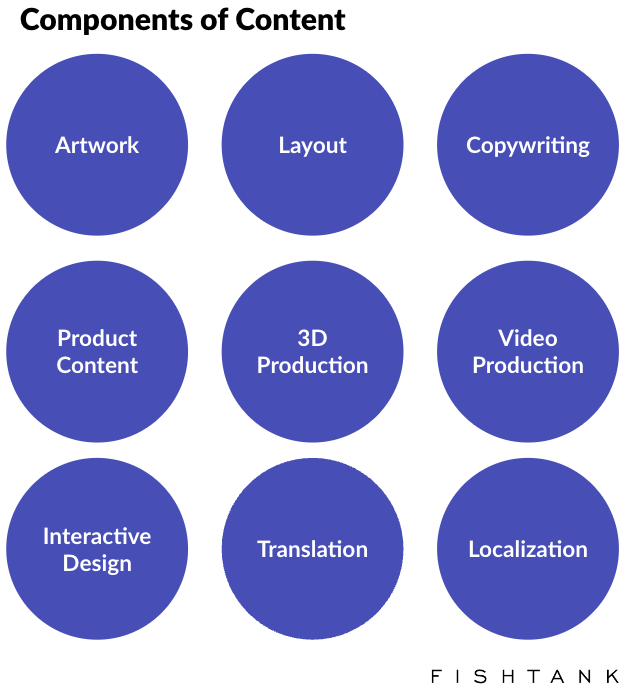
Core Functionalities of Sitecore CMP
Sitecore CMP, the most recent module of Sitecore Content Hub, offers a range of tools and features aimed at improving the entire content process, from initial ideas to publishing and beyond. The module is built to integrate with your existing content storage systems, including Digital Asset Management (DAM), Product Information Management (PIM), and Marketing Resource Management (MRM), facilitating efficient content distribution and enabling large-scale personalization across multiple touch points.
Sitecore CMP's functionalities are divided into four main categories, each essential for making content marketing efforts more efficient, improving content quality, and ensuring content aligns with business goals:
| Area | Description | Functionalities |
|---|---|---|
| Ideation & Production |
Streamlines the content lifecycle from initial idea generation to production. Encompasses tools for collaborative content creation, workflow management to oversee the content journey from draft to publication, and capabilities for adapting content to various languages and cultural contexts, enhancing its relevance and reach. |
Content Creation: Simplifies the development of diverse content types with easy-to-use tools and templates. Content Collaboration: Facilitates real-time teamwork on content projects, enhancing quality through collaborative edits and feedback. Workflow Management: Automates the process from creation and review to approval and publishing, ensuring efficiency. Content Transcreation: Supports localization efforts to tailor content for different markets, boosting global engagement. Powerful Search Options: Enables efficient content discovery and reuse with advanced search capabilities. |
| Planning |
Crucial for aligning content initiatives with overarching marketing strategies and objectives. Incorporates a structured approach to scheduling content, organizing campaigns, and managing content requirements from ideation to execution. |
Content Calendar: Offers a visual overview of content schedules, helping teams plan and visualize content distribution over time for maximum impact. Campaign Organization: Allows for the efficient organization and management of content campaigns, aligning them with marketing objectives and timelines. Content Requirement Management: Supports the identification and tracking of content needs, facilitating the creation and prioritization of content ideas based on strategic goals |
| Governance |
Ensures content production and distribution are consistent with the organization's strategic goals, maintaining quality and compliance across all activities. Provides tools for visual analysis of content effectiveness, monitoring work and progress, and leveraging a robust permissions framework for content access and control. |
Visual Analysis of Content Footprint: Enables a strategic overview of content distribution and performance, offering insights for potential strategy pivots and optimizations. Monitoring of Work and Progress: Offers tools to track the progress of content projects and workflows, ensuring deadlines are met and content aligns with quality standards. Reusability of the Core Permissions Framework: Utilizes a powerful permissions system to manage access and control over content, ensuring security and compliance with organizational policies. |
| Utilization |
Focuses on maximizing content effectiveness and streamlining content management processes. Includes leveraging built-in modules for efficient content handling, automating content review processes, integrating with Sitecore Experience Manager (XM) for seamless content personalization and delivery, and utilizing flexible taxonomies to organize and categorize content effectively. |
Built as a Module Inside Sitecore Content Hub: Seamlessly integrates with Sitecore Content Hub to provide a unified platform for content management and marketing operations. Content Review Automation: Automates the content review process, ensuring content quality and consistency while reducing manual oversight. Sitecore XM Integration: Enables tight integration with Sitecore Experience Manager for personalized content delivery across digital channels, enhancing user experiences. Out-of-the-Box Curated Taxonomies with Easy Extensibility: Offers pre-defined taxonomies for content organization and allows for easy customization to meet specific business needs, improving content discoverability and usability. |
Core Sitecore CMP Concepts

Work
The Work page provides a detailed summary of tasks specifically allocated to the current user, along with the current status of the content within the context of the CMP's workflow, enabling users to quickly assess their individual responsibilities and understand how their work fits into the broader content production process managed by the CMP. The page serves as a personalized dashboard that highlights pending tasks and their progress and situates these tasks within the larger framework of the content lifecycle, from creation through distribution.
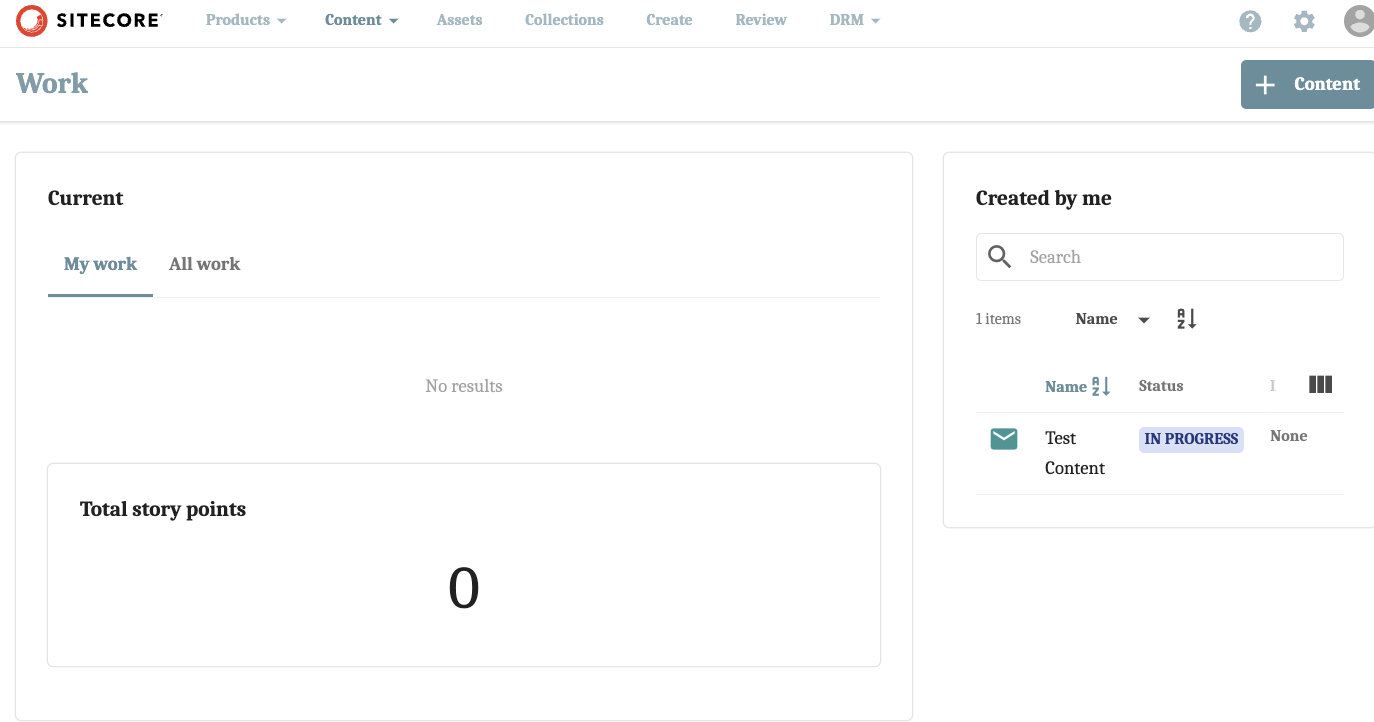
Search
The platform's Search page is designed to streamline your ability to locate and access content items efficiently. It provides users with two main search modes: a quick search for rapid, on-the-fly content retrieval and an advanced search option for more detailed, criteria-specific searches. This functionality ensures that users can easily find exactly what they're looking for, whether they need to access content quickly or conduct a more thorough search based on specific parameters or attributes of the content items.
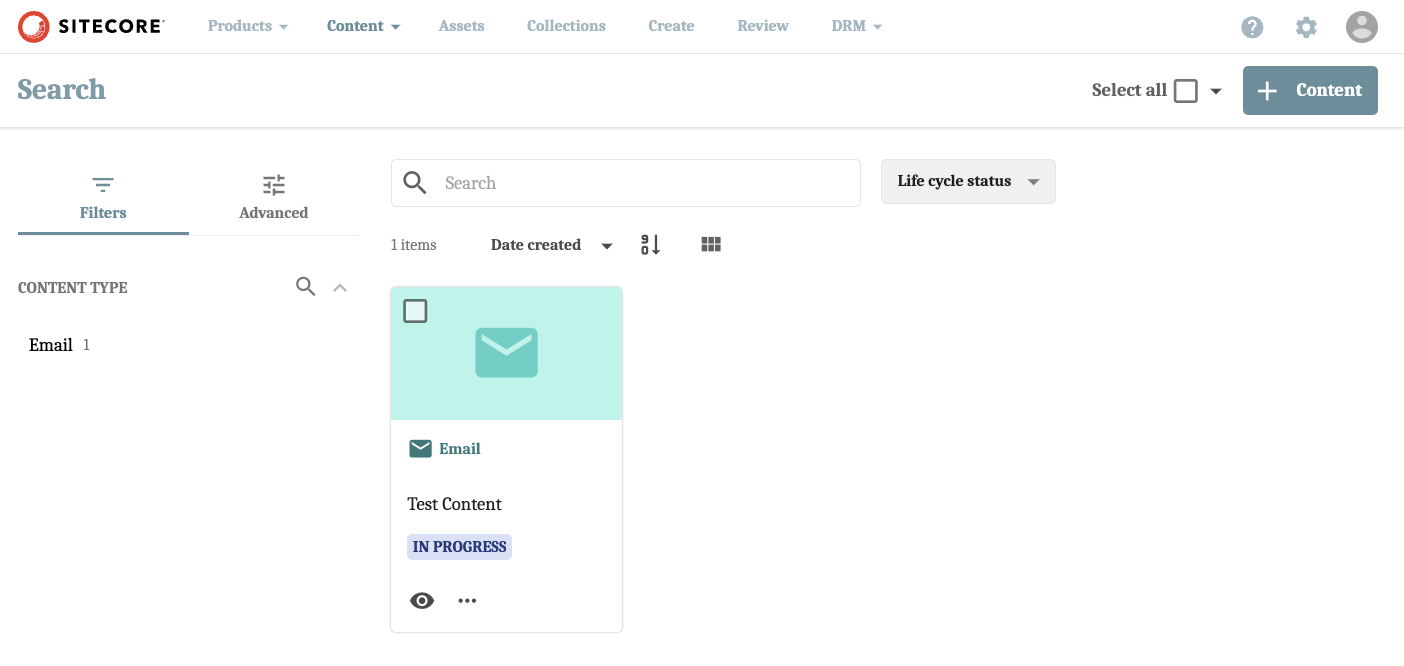
Calendar
The Calendar page enables you to quickly see when content is scheduled for release to support strategic planning and coordination of your publishing efforts.
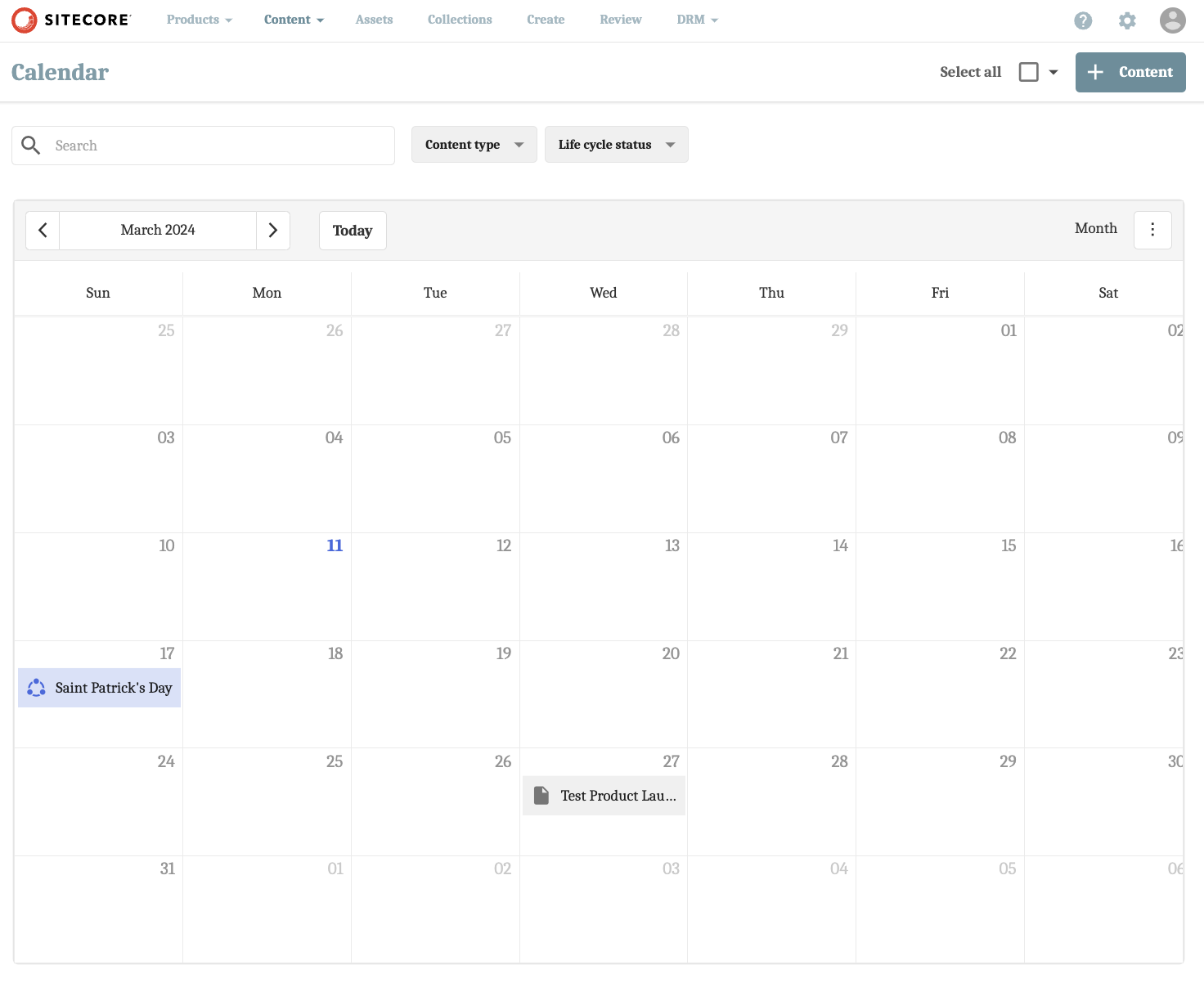
Strategy
The Strategy page provides a strategic framework, aligned with the five Ws (i.e., what, who, where, when, and why), to be sure that every piece of content serves a specific purpose and aligns with your broader marketing objectives:
- What or Type: Specifies the kind of content you're planning, such as blog posts, videos, or social media updates.
- Who or Audience: Identifies the target audience for your content, ensuring it resonates with the right demographic.
- Where or Channel and Region: Determines the platforms (social media, email, etc.) and geographical locations where your content will be distributed.
- When or Publication Date: Sets the timeline for when your content will go live, aligning with your marketing calendar.
- Why or Brief: Provides a concise overview or rationale behind the content piece, guiding its creation and objectives.
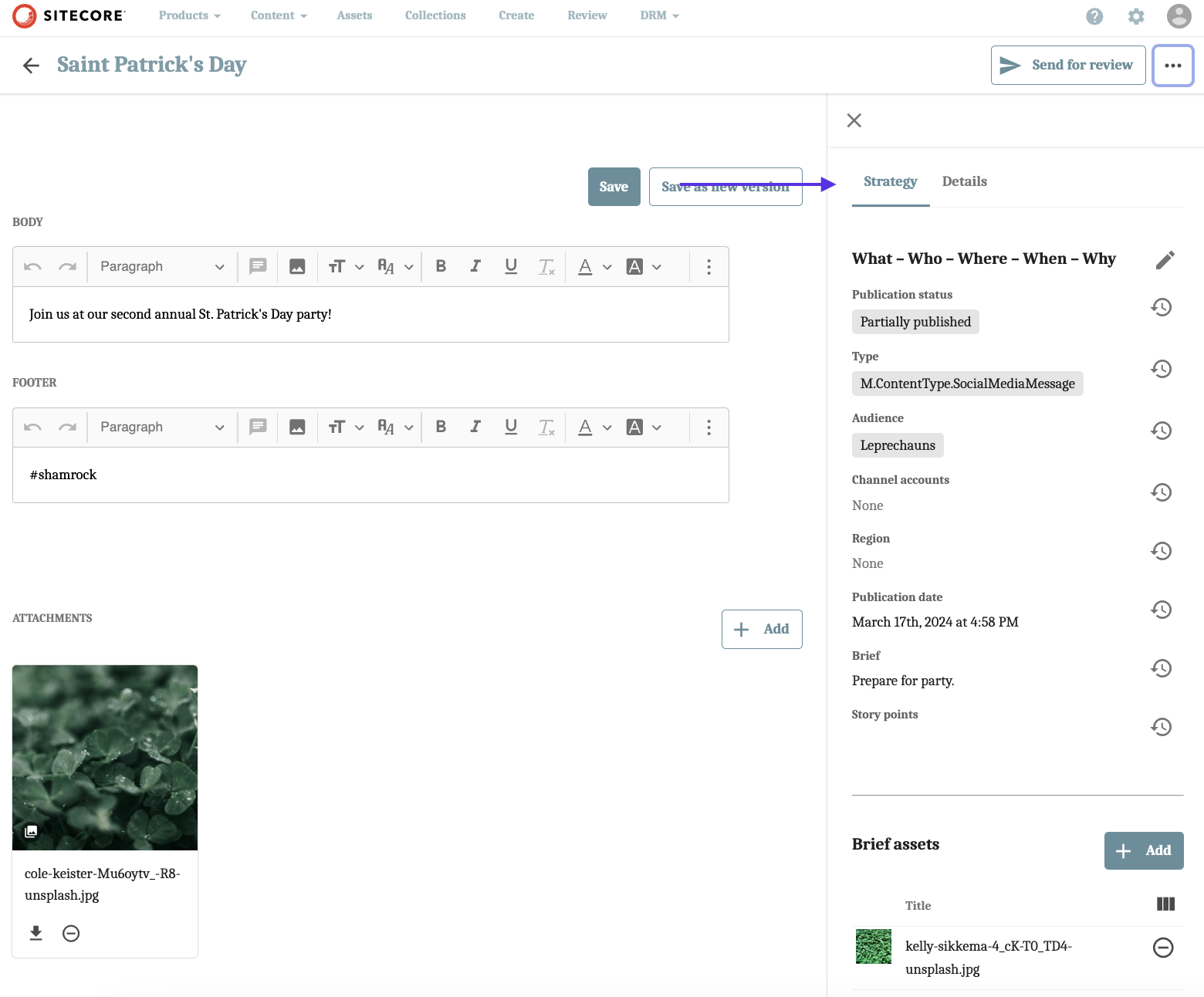
Ideas
Ideation is the process of generating new ideas — an essential step in content strategy development. For example, let’s say you’re planning a Saint Patrick’s Day event. An Idea might be to send a reminder email or schedule ads.

Within Sitecore CMP, this ideation process is initiated by the submission of an idea in the form of a draft. This idea then undergoes a review phase, where it is either approved for further development or rejected.
On approval, the idea transitions into the content creation stage. This signifies that the initial concept, perhaps the reminder email, is ready to be developed into substantive content with assets and copywriting.
Campaigns
The Campaign page enables users to initiate, organize, and monitor campaigns. Using a campaign calendar, users can strategically plan and oversee content associated with specific campaigns for an organized approach to content deployment. Sitecore CMP facilitates the evaluation of campaign effectiveness through a comprehensive dashboard that integrates performance metrics and KPIs to ensure objectives are met.
CMP also allows for the creation of campaign templates to streamline the process of launching new campaigns by providing a standardized framework that can be reused.

Content Collections
Content collections in Sitecore CMP group together content that shares a common theme or goal. This allows users to easily create, manage, and share content designed for specific channels, making it simpler to reuse. Organizing your content this way lets you quickly find what you need for different platforms.
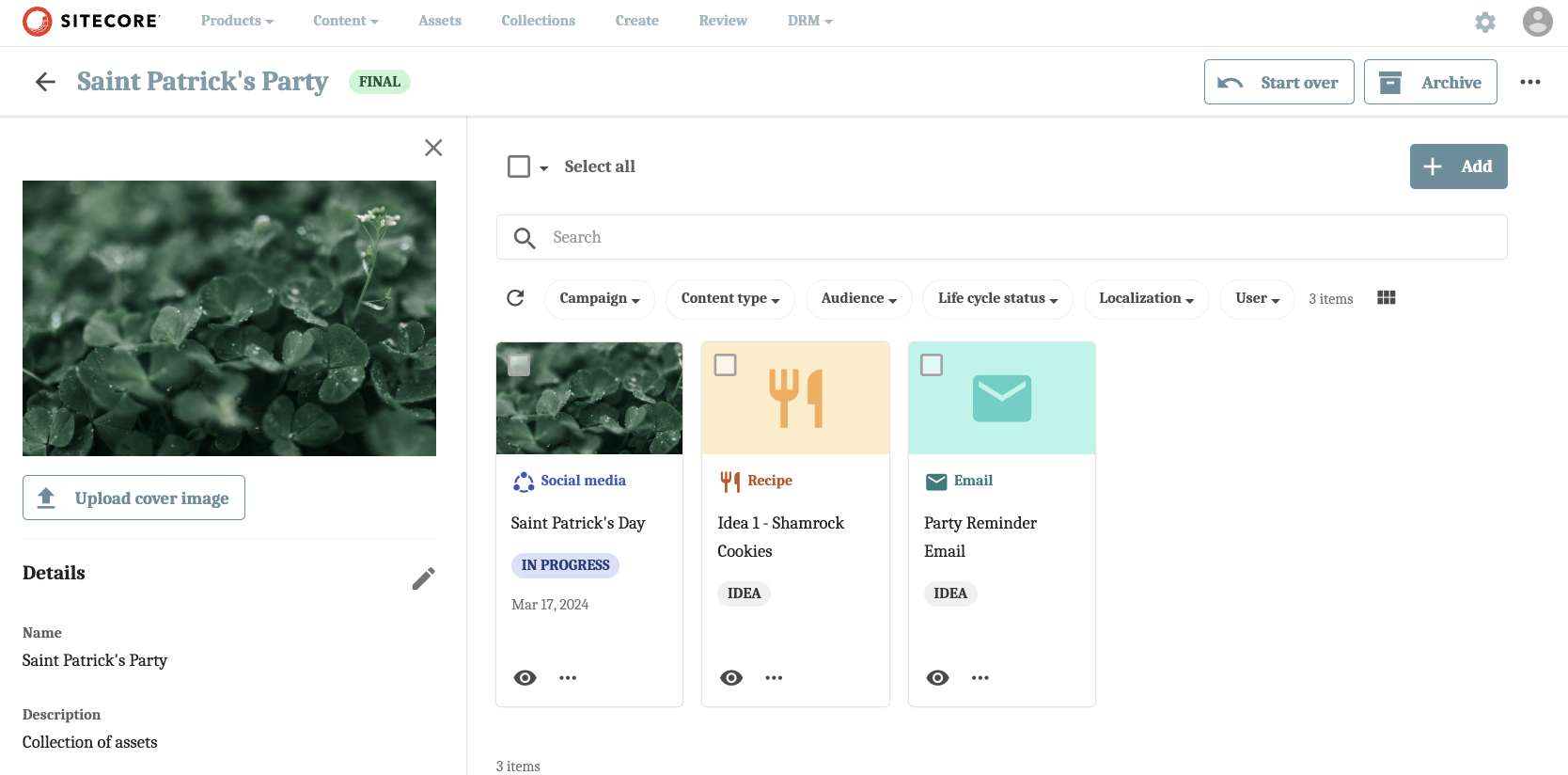
Reporting
The Reporting page provides a summary of your content activities using numbers, charts, and tables, giving you a clear view of how your content is performing overall.

Enhancing Content Marketing Operations With a CMP
Sitecore CMP offers a suite of tools that cater to every aspect of content marketing. As we've explored, Sitecore CMP's functionalities span ideation and production, planning, governance, and utilization, making your content marketing efforts more efficient and effective. By leveraging Sitecore CMP, organizations can enjoy a host of benefits, including enhanced efficiency, consistency in content quality, strategic alignment with business goals, and, ultimately, an improved return on investment.




